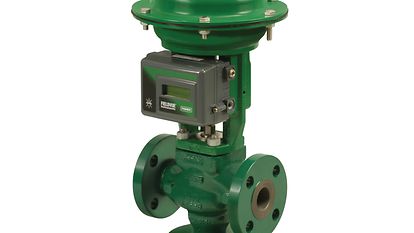Enhancing Functional Effectiveness with Advanced Control Valves
Enhancing Functional Effectiveness with Advanced Control Valves
Blog Article

Maximize Power Financial Savings and Comfort With Advanced Structure Automation Controls
In the world of modern design and facility monitoring, the assimilation of advanced structure automation regulates stands as a crucial development. By harnessing the power of automation, structures can adjust, react, and progress in methods that were when inconceivable.
Power Efficiency Perks
Energy effectiveness benefits can substantially reduce power usage and operational expenses in structures. By carrying out energy-efficient methods and technologies, building owners and drivers can accomplish substantial cost savings while also contributing to environmental sustainability. One of the primary advantages of boosting power performance in structures is the decrease of energy expenses. Energy-efficient systems, such as innovative structure automation controls, can maximize the usage of sources like lights, home heating, and air conditioning, causing reduced energy expenses gradually.
Moreover, enhanced energy performance can extend the lifespan of building devices and systems. By running much more successfully, a/c systems, lighting fixture, and other building components experience less deterioration, leading to reduced maintenance and substitute prices. Additionally, energy-efficient structures typically command higher home worths and rental prices, offering lasting monetary advantages to owners.
Moreover, power effectiveness can enhance owner convenience and productivity. Effectively regulated indoor settings with ideal lights and thermal conditions develop a more favorable and pleasant office, resulting in boosted employee fulfillment and efficiency. On the whole, the energy performance benefits connected with innovative building automation controls are complex, encompassing expense financial savings, environmental stewardship, and owner well-being.
Improved Convenience Control
Enhancing convenience control in structure settings calls for an advanced integration of sophisticated automation systems for optimal occupant health. By using advanced building automation controls, centers can tailor the indoor environment to satisfy the particular requirements and preferences of passengers. control valves.
Enhanced comfort control goes past basic temperature adjustments. It consists of features such as individualized settings, occupancy sensing units, and natural light utilization to develop a responsive and dynamic environment. By integrating these innovative controls, structures can not just boost comfort however also boost energy efficiency by maximizing system operations based on real occupancy and use patterns. Ultimately, focusing on occupant convenience through innovative automation systems results in a more satisfying and much healthier interior environment.
Functional Efficiency Improvements

Moreover, the execution of real-time monitoring and analytics devices makes it possible for structure operators to determine power inefficiencies and operational abnormalities without delay. By continuously checking energy usage patterns and system efficiency metrics, page adjustments can be made in real-time to enhance power consumption and make sure peak operational performance. control valves. Additionally, including demand feedback techniques right into building automation controls can better boost functional efficiency by dynamically changing energy usage based on grid conditions and prices signals
Indoor Climate Optimization
Effective indoor climate optimization is an essential element of building automation controls, making sure passengers' read convenience and health while taking full advantage of power cost savings. By using sophisticated sensing units and controls, constructing automation systems can continually monitor and readjust temperature, moisture degrees, air top quality, and ventilation to create an optimal indoor atmosphere. Keeping comfortable and constant conditions not only enhances resident fulfillment however additionally boosts productivity and total health.
Interior climate optimization likewise plays a critical duty in power efficiency. By fine-tuning cooling, air flow, and heating systems based on real-time information and occupancy patterns, constructing automation controls can dramatically minimize energy usage - control valves. For instance, implementing approaches such as demand-controlled air flow and thermal zoning can help decrease energy waste while guaranteeing that each area of the structure gets the needed conditioning.

Lasting Setting Development
Building automation controls not just maximize interior climate conditions for power performance and passenger comfort yet additionally lay the structure for producing a sustainable environment via calculated administration of resources and systems. By incorporating sophisticated structure automation technologies, such as sensing units, actuators, and intelligent software application, centers can check and readjust energy use in this hyperlink real-time to decrease waste and minimize their carbon footprint. These systems enable anticipating maintenance, determining prospective concerns before they escalate and enhancing equipment efficiency to enhance durability and performance.
Additionally, lasting environment production expands beyond power management to include water preservation, waste decrease, and indoor air quality enhancement. Building automation controls can regulate water usage, spot leaks, and ensure correct waste disposal techniques, adding to general sustainability initiatives. Furthermore, by controlling and keeping an eye on air flow and filtration systems, these modern technologies improve occupant health and wellness and productivity while reducing power usage related to heating and cooling procedures.
Verdict
To conclude, advanced structure automation manages offer substantial advantages in terms of energy cost savings, comfort control, functional effectiveness, interior climate optimization, and developing a sustainable setting. By carrying out these controls, buildings can attain optimal efficiency while reducing energy usage and boosting resident convenience. It is noticeable that the usage of advanced automation technology is important in boosting structure efficiency and producing a much more lasting future.
Power performance advantages can dramatically lower power usage and functional prices in structures. On the whole, the power performance advantages linked with innovative structure automation controls are diverse, including expense savings, environmental stewardship, and resident wellness.
In addition, including demand reaction strategies right into building automation controls can further boost operational efficiency by dynamically readjusting energy use based on grid problems and prices signals.
Building automation regulates not only optimize interior environment conditions for energy effectiveness and resident comfort yet additionally lay the structure for developing a lasting atmosphere through critical administration of resources and systems.In conclusion, progressed building automation regulates offer substantial benefits in terms of power cost savings, comfort control, functional effectiveness, interior environment optimization, and creating a lasting environment.
Report this page